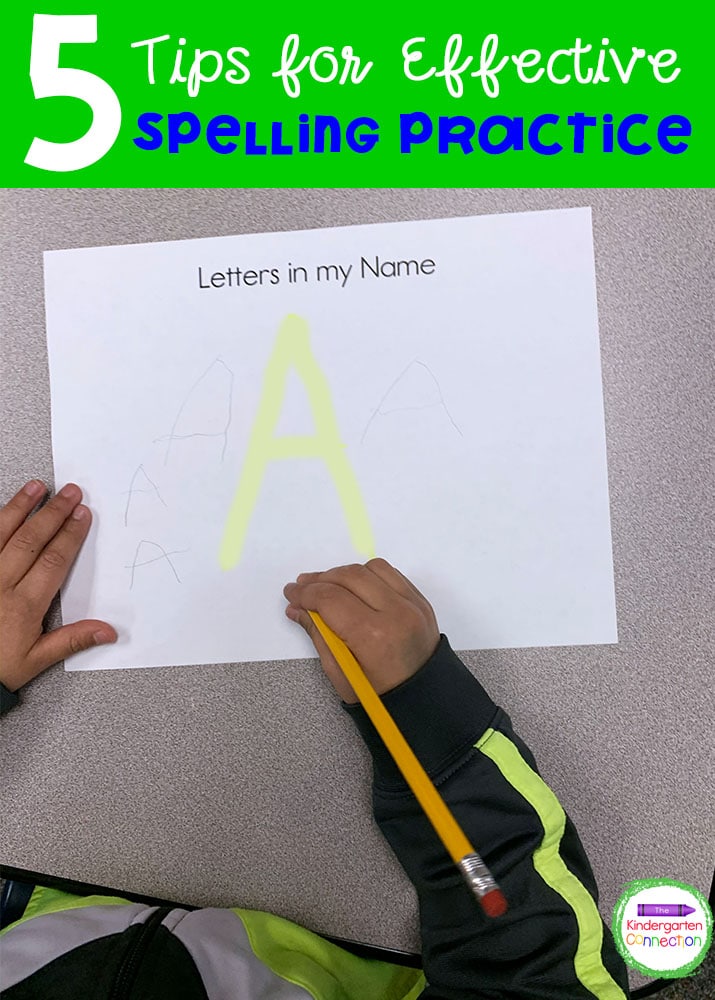Teaching spelling can be tough. Really tough. But there are some ways to make it a little easier! With just a little know-how and these 5 tips for making spelling practice more effective, you can help your kids become stronger, more confident spellers!
*Guest post by Sarah from Stay at Home Educator

Some kids are just “good spellers.” It comes naturally to them. They just get it and do it. For other kids, it’s not so easy. It doesn’t come naturally and it’s a downright struggle. A painful one at that. They simply do not have the spelling skills that come to naturally to “good spellers.”
Research-based literacy curricula have (thankfully) moved away from just teaching visual spelling strategies. Remember bringing home a word list each Monday and writing each word ten times to prepare for the spelling test on Friday? That’s a visual strategy, and not always the most effective, either.
There are more ways to do spelling practice, and depending on the kid, much more effective ways.
Phonics is the cornerstone of spelling. As children learn to read new sound-spelling patterns, they can also use those tools to learn to spell those same patterns. This reiterates that all sounds have a direct correlation to a specific letter or group of letters that make up the written word.
Actually, you might say that practice makes permanent. Just like in learning to play the piano, to read music, practice creates muscle memory, and with enough practice, reading the music is no longer necessary.
The same is true for spelling practice. The more practice that goes into spelling words, the more muscle and reading memory is built. But only if the spelling practice is done the right way! A child that consistently misspells the same word 100 times is building memory to continue spelling that word wrong, which is why misspelled words should be corrected and why spelling practice needs to be supervised.
A long list of 20 words, or even 10 words, is overwhelming to a poor speller. Break the list into manageable chunks by practicing smaller sets at a time. Be sure to keep some of the easier words within the smaller set, so your student will feel some success during each spelling practice.
Any writing activity is a great way to practice spelling words in a more authentic way. Encourage children to keep a writing journal and assign a small set of spelling words to use during journal time. Or have them write silly sentences using their spelling words, or MadLib stories.
Most of all, as a teacher, when writing in front of the children, think out loud about how you are spelling specific words that are on the spelling list or that correlate with the sound-spelling pattern being learned.
When children are first learning how to read and spell, they don’t learn well by sitting and simply copying words with a pencil. They need to move and manipulate the letters that make up the spelling words.
This is one of the reasons why children are so fond of writing trays filled with salt, shaving cream, or cookie sprinkles, and why they love making letters out of pipe cleaners and blocks.
Your planning will be so much easier with instant access to:
Be sure to request an invitation so that you don’t miss your chance to be part of the best early childhood club around!
